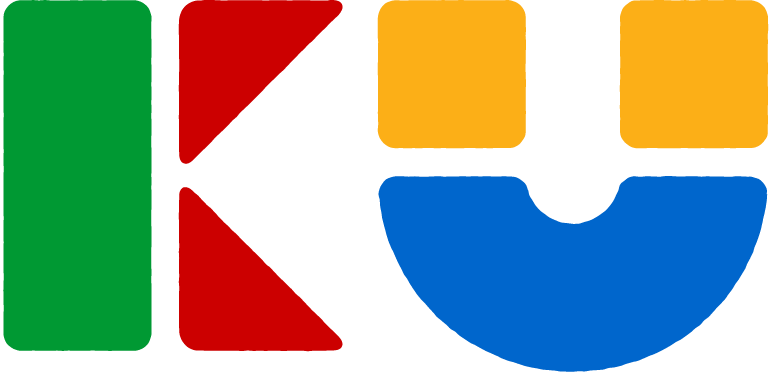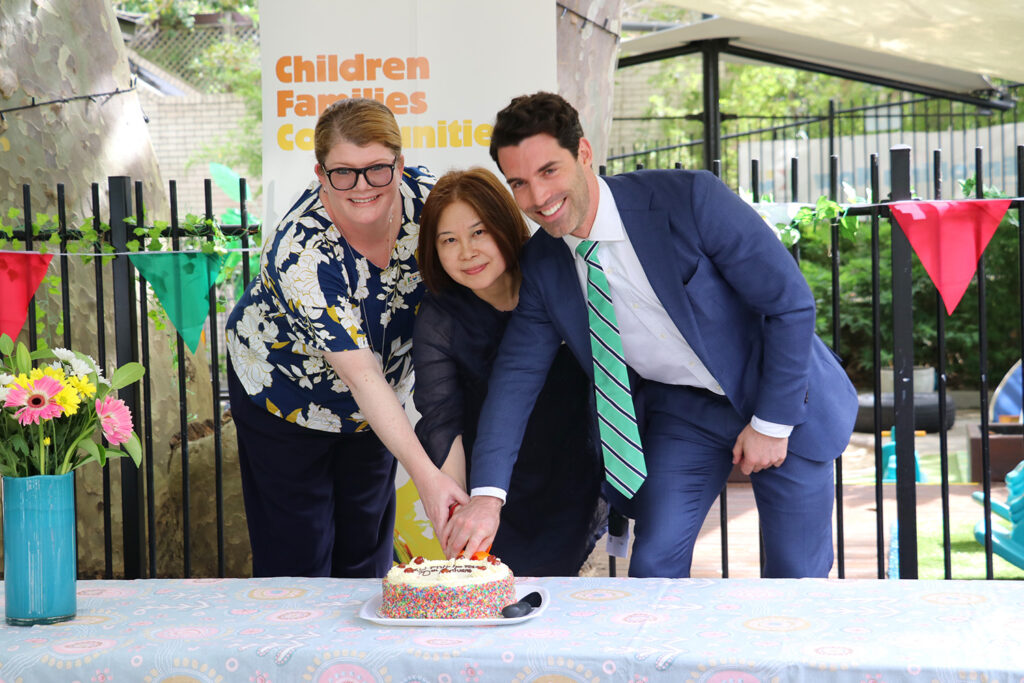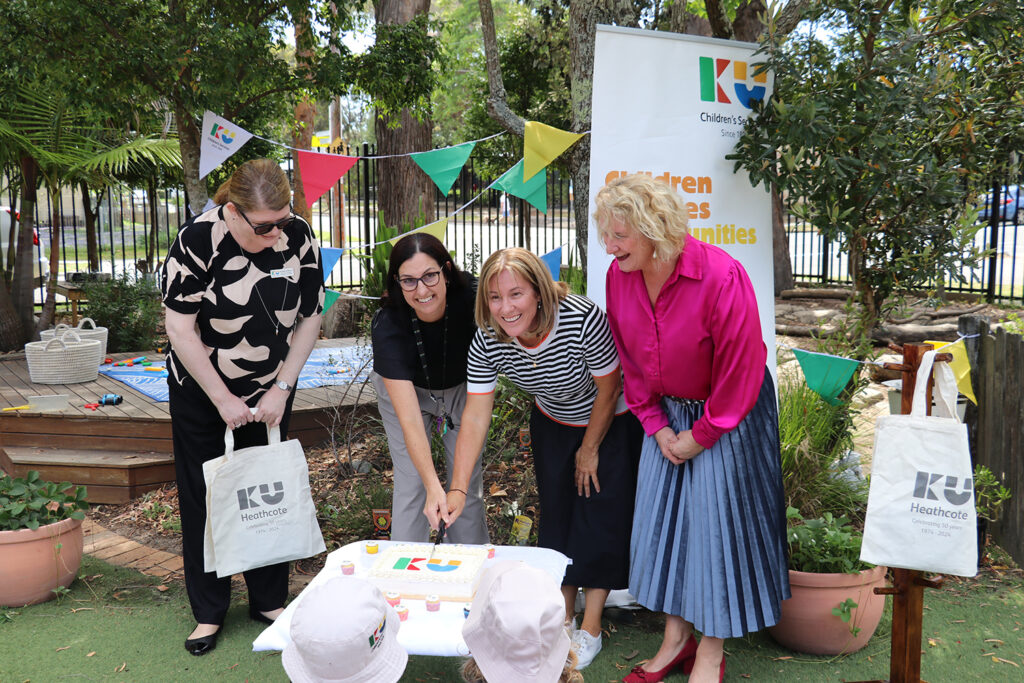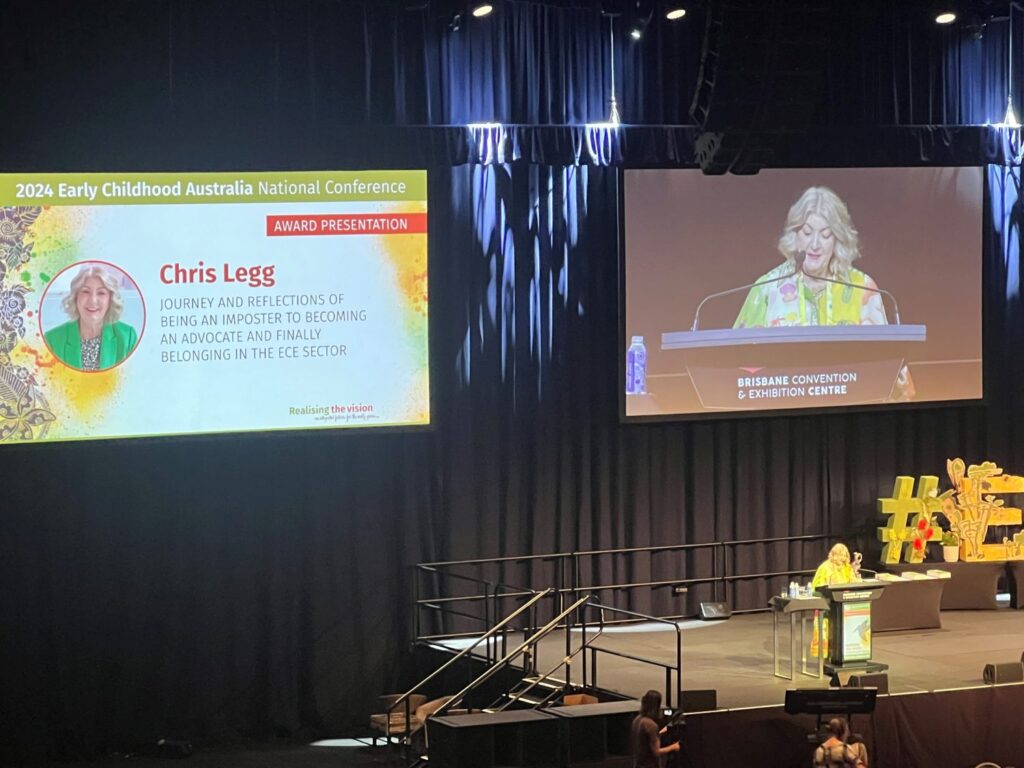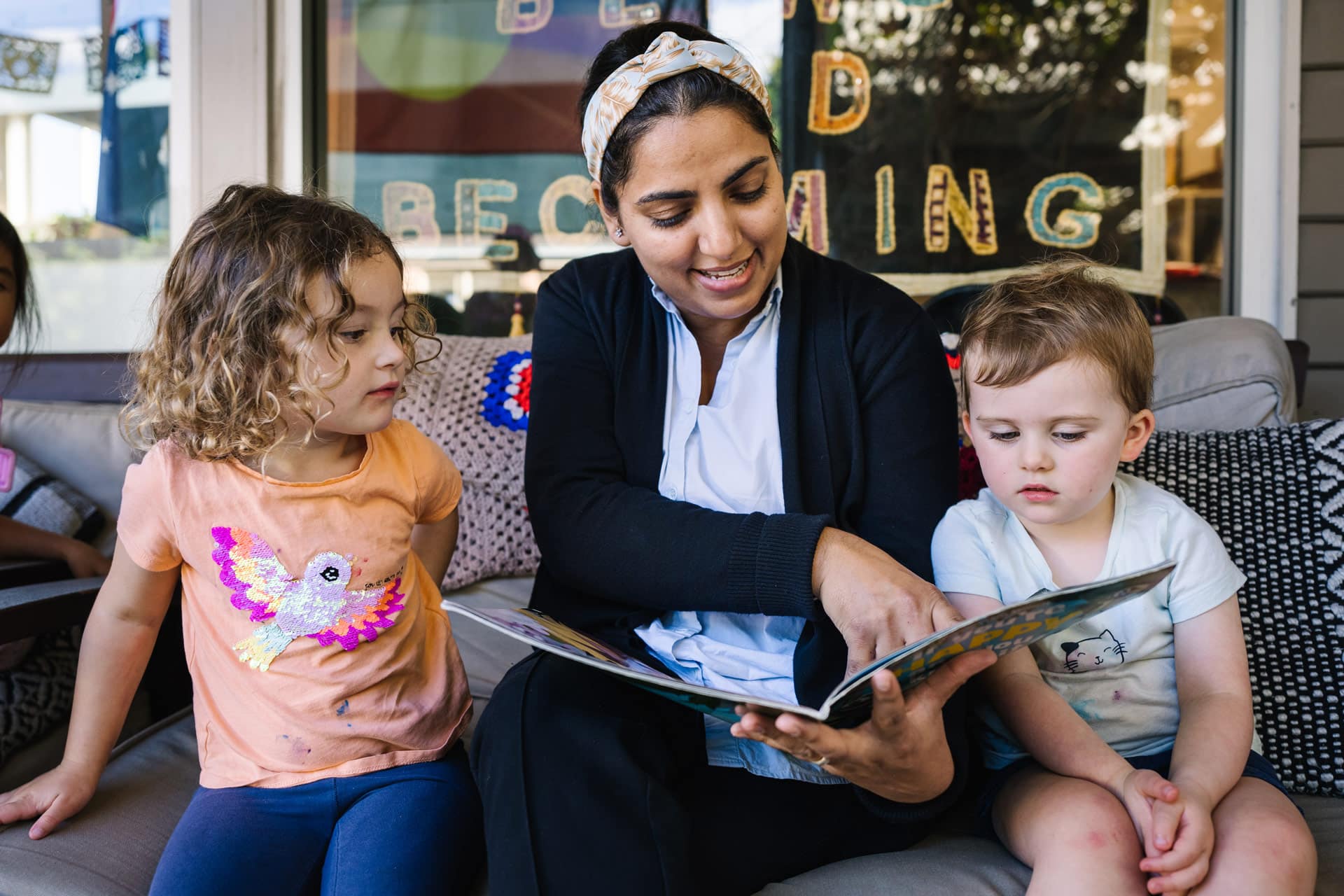
Poetry and young children
Fiona Harris reminisces about the importance of poetry in her life and how she uses it in her teaching.
By Fiona Harris, KU Learning & Development
July 2022
International Poetry Day is celebrated on 21 March, but did you know that the month of August is Australian Poetry month? In our office it prompted us to recall times past…when we were required to assemble a poetry anthology (picture a small wooden box full of handwritten poems, sorted into some semblance of order) during our final years of Teachers College. It set us to musing about the use of this tool with the children we have taught over generations and to a specific year when I worked with a wise educator named Joan. Joan loved poetry and whenever an idea caught wind with the children she would ponder on their ideas and questions and return to us the next day with a poem she had scribed in honour of their thinking. I loved working with Joan. I recall one day the children turning over all of our tables and creating a sea of ships, masts, hats, planks and telescopes in our playroom to role play Joan’s poem about pirates she had penned as she thought about the children’s adventures a day earlier ….”we shouted Hi, we shouted Ho, and all the while we looked around for ships that we could sink!” (Joan Corrigan 1994)
When I was a child, my father had two red, linen-bound volumes of AB Patterson and Henry Lawson which he received at the age of 21 and memorised! As a family of campers, he would retell these iconic ballads of Australian history around the campfire with much enthusiasm…and it was catching…I could recite the whole of Patterson’s ‘The Man from Ironbark’ by the time I was in second grade and in an ode to his mother, I read ‘The Bush Christening’ at her funeral.
“
Education is not the filling of a pail, but the lighting of a fire.
William Butler Yeats
There are two camps when it comes to poetry; those who love and use it with enthusiasm and others who shrink from lines of verse, wary of the language use, metaphor, rhyme and rhythm. If you are in this second camp, can I encourage you to dip your toe into the water and try it again from a new perspective. Poetry offers many opportunities to support children’s learning as you engage with children’s questions and ideas and deepen the complexity of their thinking with a well-chosen poem.
The EYLF places high importance in the development of communication skills. Children are social beings who are intrinsically motivated to exchange ideas, thoughts, questions and feelings, and to use a range of tools and media, including music, dance and drama, to express themselves, connect with others and extend their learning. They need good receptive and expressive language skills to do this. The EYLF encourages us to provide literacy opportunities in many forms, including poetry.
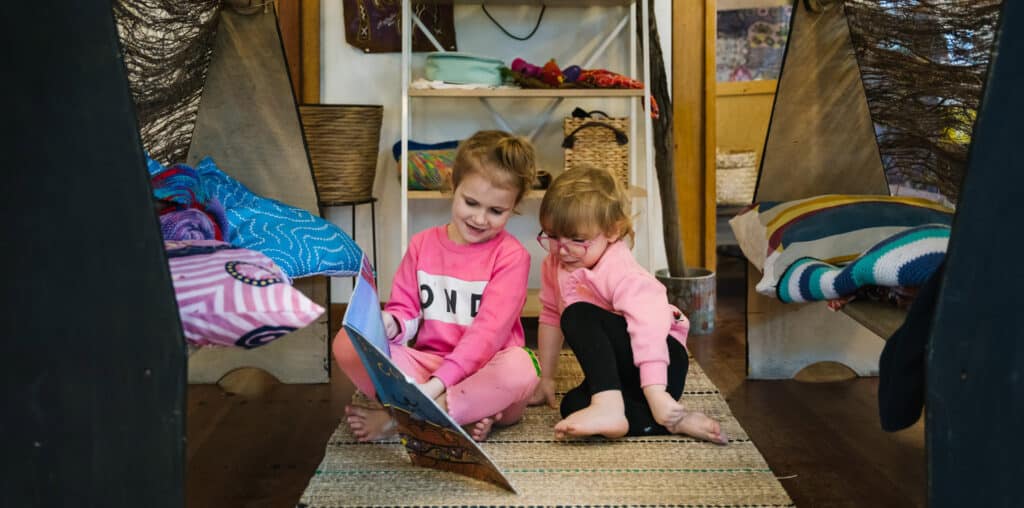
Poetry supports language development as children learn new words and play with rhyme. The very nature of writing poetry demands considered word choice and this in itself guarantees an offering of words previously never heard! Poetry supports cognition as children wrestle with new word meanings and explore complex ideas through simile and metaphor. When children are listening to poems being read orally, they are building their listening skills. They learn to attend to the words they hear and to think about what those words mean together. Poetry supports the development of memory as children engage with favourite poems and recall extended parts of the poem over time. In addition to vocabulary expansion and language and cognitive development, relational development is another amazing benefit of reading poetry to children. Through poetry, children are invited into new perspectives of the world in which we live, poetry engages different points of view and explores cultures and beliefs. Poetry can have a positive impact on the social and emotional learning of children. It may offer them a new way of thinking about something. It can put things into words that children may not know how to express otherwise. Poetry encourages children to express themselves and their feelings. Poetry affirms our common humanity, revealing to us the feelings and questions which unite us. Jeanette Winterson, a poet and writer, once said that poetry “It isn’t a hiding place. It is a finding place.” Poetry inspires children’s imaginations to run wild. And more than anything, poetry is fun to share!
It is very difficult to choose my favourite children’s poem, but having spent my last 10 years in a beachside setting exploring our coastline, I think the poem that got the most opportunities for sharing was ‘The Fish With the Deep Sea Smile’ by Margaret Wise Brown. This poem ignited our imaginations about the myriad of creatures swimming in the depths. It was very exciting, and our curiosity was hooked as we poured over old Gould League posters of the varieties of Australian fish in our waters. Amazing drawing opportunities followed. Stories of family fishing adventures were shared which invited further walks along our beach looking for treasures.

Poetry is good for us as educators too, helping us to understand wider perspectives and our common bonds as people, deeply engaged in the important work of building and creating communities who live well together. I had the opportunity to meet Kirli Saunders in June 2018 at the Wollongong City Council Reconciliation Conference. Kirli is a proud Gunai woman, with ties to the Yuin, Gundungurra, Gadigal and Biripi people. She is an international children’s author, poet and emerging playwright. Kirli provided an overview of the Poetry in First Languages, Dharawal project and shared a poetic reading and reflection for the 120 participants at the conference. Under her guidance, we created collaborative poems, reflecting on our learnings from Elders and community throughout the conference. It was an incredibly moving experience to hear people express their hope for true reconciliation as a response to hearing the stories shared by elders.
This poem extract by Katrina Tjiayi, is a response to the 100 languages poem of Reggio Emelia which was shared in The Challenge Journal. It helps me to better understand relationship, language, and culture from an experience outside of my own.
Before the baby is born,
she hears the mother’s voice and this relationship is the number one language.
The language and stories are carried inside …. they are already there…
Ann Pelo, during her residency work with us in 2016, used poetry as a tool for educators to consider the fires they set and light as educators. One particular poem Ann shared gently reminded me of the need to leave space and room for multiplicity of thought and ideas.
‘Fire’ by Judy Brown
What makes a fire burn
is the space between the logs,
a breathing space.
Too much of a good thing,
too many logs
packed in too tight
can douse the flames
almost as surely
as a pail of water would.
So building fires
requires attention
to the spaces in between,
as much as to the wood.
When we are able to build
open spaces
in the same way
we have learned
to pile on the logs,
then we can come to see how
it is fuel, an absence of the fuel
together that make the fire possible.
We only need to lay a log
lightly from time to time.
A fire
grows
simply because space is there,
with openings
in which the flame
that knows just how it wants to burn
can find its way.
And then this jewel of thought, given to us by Tyler Knott Gregson, as I consider the challenges, stresses and responsibilities we carry as early childhood professionals working in a regulatory climate which often does not leave room for reading poetry.
Promise me
you will not spend
so much time
treading water
and trying to keep your
head above the waves
that you forget,
truly forget,
how much you have
always loved
to swim
Literacy learning takes a lifetime and we continue to gather more pleasure and understanding as we encounter more texts, more conversations and more cultural and arts experiences. What are you reading now? How is this influencing your thinking and your work?
Malaguzzi tells us that when children are born they are washed by an ocean of words, by signs, and they learn the art of speech itself, the art of listening, the art of reading, and to give signs meaning. In communication the child’s whole life is contained, man’s whole life: the logical tools of thought, communication as a base for socialisation, and the feelings and emotions which pass through communication. To learn how one can speak and listen are some of the big questions of life.
To what extent does the language and literacy component of my program build on children’s interests, engage and motivate children to learn, and promote independence and self-regulation?
What opportunities are there for rich conversations and interactions that promote language and literacy learning and development?
What opportunities do children have to engage in language and literacy learning through the contexts of play, real-life engagements, and routines and transitions?
How does the language and literacy component of my program support the diversity of children’s experiences and the cultural knowledge that they bring to kindergarten?
Want to know more?
To learn more about supporting literacy and language and the full range of KU Learning and Development courses and events, click the below button.
References
https://redroomcompany.org/poet/kirli-saunders
Katrina Tjitayi, Keeping Anangu voices Close 2014
https://www.huffpost.com/entry/why-children-need-poetry_b_5988612fe4b0bd8232029903
Gunilla Dahlberg, Peter Moss, Alan Pence Beyond Quality in Early Childhood Education and Care: Languages of Evaluation
